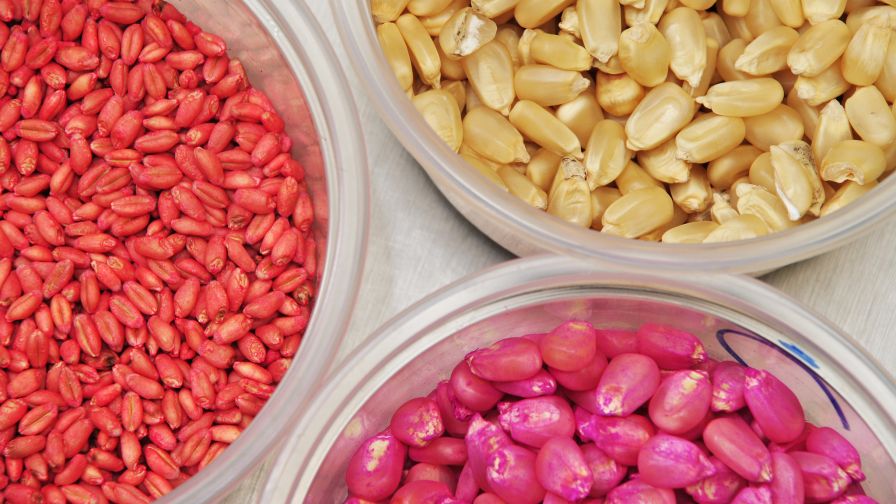Do Fungicide- and Insecticide-Treated Seeds Boost Weeds?

A researcher with the NH Agricultural Experiment Station at the University of New Hampshire has received a $474,679 grant to determine if pesticide seed treatments inadvertently protect weed seeds in the soil from being attacked by naturally occurring invertebrate and fungal species. Shown here: Different Bidasem seed samples, treated and untreated, await germination testing. Photo credit: X. Fonseca/CIMMYT
Thanks to $474,679 of funding, a researcher with the NH Agricultural Experiment Station at the University of New Hampshire (UNH) will look into if pesticide seed treatments inadvertently protect weed seeds from being attacked by naturally occurring invertebrate and fungal species.
“A host of insects and microbes that live in and on the soil, perform beneficial services that that we often fail to appreciate, including suppressing weed populations. By attacking weed seeds in the soil, these beneficial organisms help to reduce the numbers of weeds in a crop field that then need to be controlled through other means, such as with tillage or herbicides,” says experiment station researcher Richard Smith, UNH associate professor of agroecology.
Fungicide and insecticide treated seeds are intended to protect the crop from soil pathogens and insect pests. Increasingly, however, scientists are finding that these seed treatments, particularly the neonicotinoid insecticide component of the treatments, also are affecting other organisms that live in and around agricultural fields, including soil microfauna are beneficial to agriculture.
The grant will fund a three-year project lead by Smith. UNH researchers will investigate the role pesticide seed treatments play in mediating weed population and community dynamics, identify likely mechanisms contributing to the impacts of such treatments on weeds and their natural enemies, and explore whether cover crops, coupled with additional integrated pest management tactics, can mitigate nontarget effects of pesticide seed treatments on weeds.
“We have data suggesting that the insecticides and fungicides coated on most corn and some soybean seeds, generally referred to as pesticide seed treatments, can exacerbate the weed challenges faced by farmers. We hypothesize that pesticide seed treatments protect weed seeds in the soil from attack by their invertebrate and fungal ‘natural enemies,’ and we have preliminary data supporting this,” Smith says.
“We also have data indicating that noncrop plants, such as cover crops, can take up significant quantities of residual pesticides from the soil, suggesting that strategic planting of cover crops could mitigate spill-over effects of pesticide seed treatments on weeds, including those resistant to glyphosate,” he says.
Glyphosate-resistant weeds are a serious concern in many regions of the United States, and this has prompted many farmers to seek alternative ways of managing these weeds, including by enhancing populations of organisms that naturally kill weed seeds. “If pesticide seed treatments are facilitating the persistence of weed seeds in the soil by protecting them from attack by beneficial organisms, whether that be on farms in the Corn Belt or here in New Hampshire, that’s a problem we really need to figure out how to address,” Smith says.
The research project builds on Smith’s previous experiment station-funded research on cover crops. John Tooker, associate professor of entomology at Penn State, also is collaborating on the project.
The grant was made by the U.S. Department of Agriculture’s (USDA) National Institute of Food and Agriculture (NIFA), with funding made possible through NIFA’s Agriculture and Food Research Initiative (AFRI) program, authorized by the 2014 Farm Bill.
“There continues to be a critical need to develop new ways to defend our crops against pests,” NIFA Director Sonny Ramaswamy says. “NIFA investments will also help to develop better strategies to foster the beneficial insects and microbes that have potential to combat pests.”









